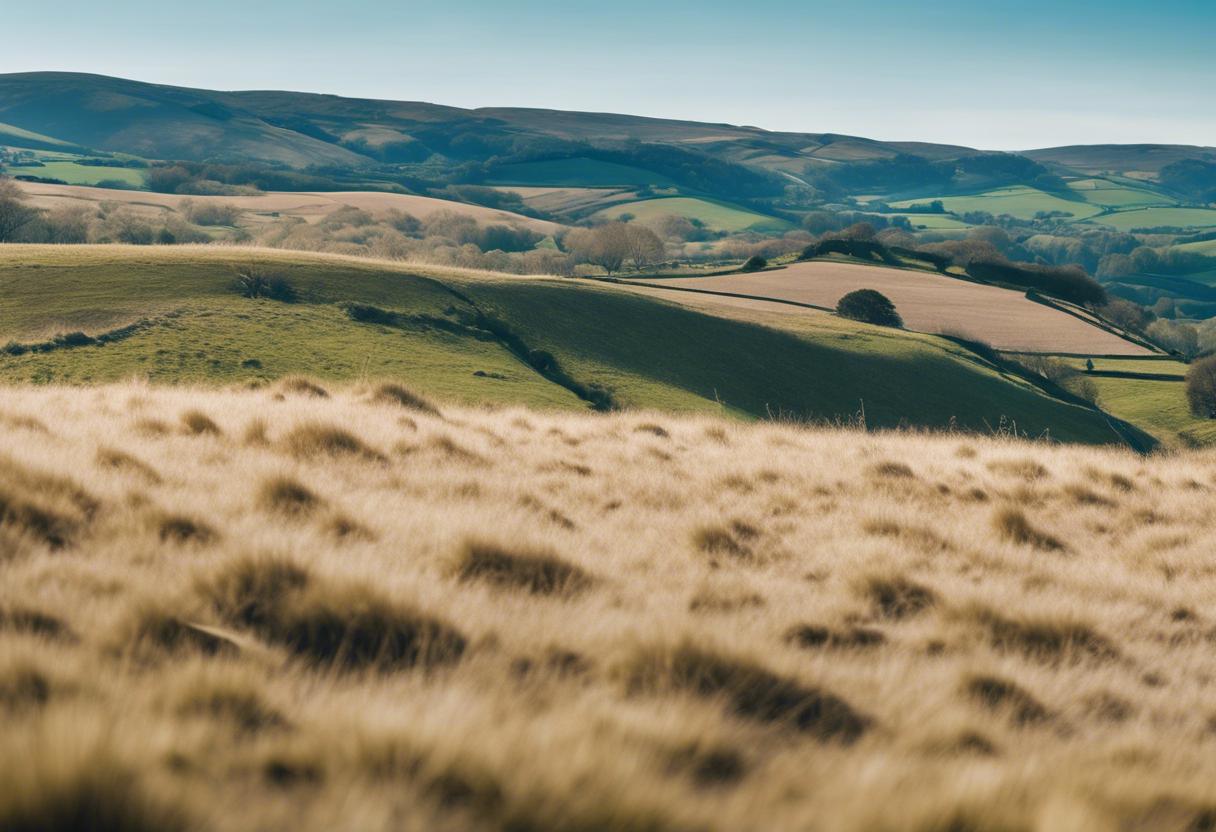Upon relocating to Wicklow over four decades ago, the surrounding mountains intrigued me, leading me to frequently engage in hillwalking during my leisure. I initially viewed these highlands as the most naturally unaltered regions of eastern Ireland, however, I soon realized something wasn’t right. It was virtually devoid of the distinctive chirping of birds and the wide expanse was majorly occupied by sheep, with forests, particularly non-native conifers, solely existing in government-owned forestry establishments. The extensive semi-natural landscapes formed by Ireland’s highlands comprise roughly a third of the country’s land area, mostly areas above the height of 150 meters. Despite their magnitude, they have been heavily degraded due to erosion, drainage, wild fires, overpopulation of sheep, soaring deer numbers, and excessive tree planting. Changes in climate already present an additional hazard. The ensuing effects are reduced pastureland, a decrease in plant-life typically seen in highlands, and the disappearance of emblematic bird species like the curlew and skylark.
The rampant fires have resulted in large areas of bare, eroded peat. Beyond detrimental ecological impacts, this also contributes to atmospheric carbon release, exacerbating the already dire climate emergency. Under the funding of the EU, an ecologist named Faith Wilson was hired to undertake a study of several shared lands for a project known as SUAS (Sustainable Uplands Agri-environment Scheme) in the Wicklow Mountains. Wilson reported that frequent fires had left behind barren peat which was not only leaking carbon but also unfit for livestock grazing. She further explained that this was contributing to an increased risk of landslides as the eroded peat was washed away from the mountains. This in turn led to a diminished capacity to soak up precipitation, thus increasing the likelihood and intensity of flooding in regions downstream and rivers in the lowlands. Highlighting the need for effective management strategies, she noted that the burning practices implemented in the highlands of both Wicklow and Dublin have had devastating consequences. “These hills have been on the decline for quite some time now”, she emphasised.
Fortunately, there is an array of continuing efforts for the restoration of peatland taking place in Wicklow Mountains National Park. One such location is the Barnacullian Ridge, in close proximity to Turlough Hill, which is currently witnessing severe peat deterioration. The peat here has entirely lost its plant cover and is subject to erosion, which results in significant complications downstream. According to the district conservation officer for the National Parks and Wildlife Service (NPWS), Hugh McLindon, the situation is often akin to a desert, with the exposed peat behaving like drifting dunes in the Sahara. Additionally, animal activity further exacerbates the damage, hindering new growth.
To combat this, NPWS personnel have cordoned off sections to decrease grazing levels. They have collected heather brash from the nearby hills and scattered it on the exposed peat in Barnacullian, providing twofold benefits of managing the flora at the points it was harvested from, while furnishing resources to stabilize the peat in the areas of restoration. The brash is used to create a mat, reducing peat erosion and facilitating the growth of mosses and grasses. As part of the process, they also disperse lime, fertiliser and grass seeds to form a temporary protective grass layer and also to further solidify the peat. Once the lime process is halted, the grass dies off and the acidity returns to its natural level. After approximately three years, native mosses and grasses start populating the site and by year five, the location should be fully covered with indigenous plant life.
To mitigate the erosive damage caused by water run-off, the fundamental approach is to decelerate this process. Ingeniously small dams are constructed across the gullies, acting as barricades for the water. This process aids in storing the water within the bog for a prolonged duration, which further allows the re-emergence of sphagnum mosses. Without the presence of these mosses, the bog wouldn’t potentially be able to become “active” and absorb carbon. However, the gullying and steep slopes of blanket bogs pose a challenge in restoring the water levels uniformly on the surface. This necessitates a mosaic-style approach, wherein various solutions are implemented across the site. The meticulous manual labour involved in this task is supported by numerous voluntary bands, including Rewild Wicklow and Mountaineering Ireland, who are able to gather volunteer troops for assistance on weekends. McLindon notes that the team is constantly expanding their knowledge based on local conditions and the effectiveness of various techniques; still, it’s early stages. With over 300 hectares of bare peat present in Wicklow Mountains National Park alone, this task will require commitment for some time to come.
Richard Nairn, an ecologist and author of the recently published book “Future Wild: Nature restoration in Ireland” by New Island Books, states.

